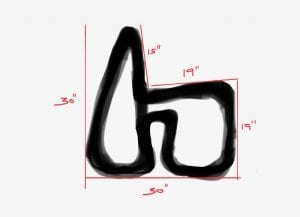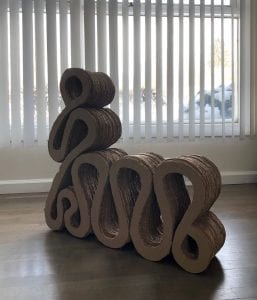Biofuel Lab – Reflection:
Initially, when this lab was first introduced, I was surprised to hear that mud and bacteria are able to produce energy. After reading about it, I expected to see this system powering the calculator in a shorter amount of time with less mud/bacteria. This wasn’t the case, it took almost 5 beakers to power the calculator and it took some physical effort to match the copper for it to produce energy, however at the current state of this new energy source, I was still amazed that energy was produced at all. I think there is a future to this energy source but I can only imagine it in the far-future. Because of its inefficiency, the general public will most likely refuse to use this until there is a more practical way that is just as easy as putting in AA batteries into a calculator. I think designers should approach this challenge rather than scientist. It will take a lot of creativity to develop a “packaging” system that is able to store and distribute energy from mud and bacteria while still remain sustainable.
Final Project – Chair:
For this project I will be approaching sustainability through product design. I will collect cardboard, and use it to create a functional chair using slotting construction. I chose to make a cardboard chair because cardboard is a material I see being thrown away everyday, it is abandoned on the sidewalks, in the trash cans, and in the recycling bins. It is a material that takes up alot of space in the city. Also I often times see chairs being abandoned and thrown away in the sidewalks, therefore, if for any reason this chair is to be discarded by the consumer, it can be recycled with the other cardboard and paper.
Most of the cardboard today is used to deliver products and packages. The problem is that there is absolutely no use for it once the package is delivered, forcing the consumers discard it. In our day and age, where 40% of internet users are online shopping (Statista), the overload of cardboard is growing package by package. Dealing with this issue essentially comes down to two principles, mitigate or adapt. To mitigate in this case would include redesigning packaging or rethinking a material that can disintegrate after package is delivered. On the other hand, adapting to cardboard can include finding new functions for cardboard, using it for furniture is one of the most efficient reuse of cardboard. In fact, turning to reclaimed cardboard furniture will make allow for new sustainable manufacturing innovations because it is easy to work with, as well as make for beautiful furniture material.
As mentioned in the ecodesign strategy wheel, this chair will strive to reduce the material impact of cardboard by re-using and providing it a new purpose (Okala, 18). Cardboard is a material that is easily recycled, however due to the amount of cardboard being discarded it contributes to contaminated water issues, greenhouse gas methane, and landfill (Local Government NSW, 1).
Citations
Duncan, Eric. “Topic: Online Shopping Behavior in the United States.” Www.statista.com, www.statista.com/topics/2477/online-shopping-behavior/. Accessed 2 Mar. 2019.
Belletire, Steve, et al. “Okala the Ecodesign Strategy Wheel.” Koala.net, Okala, www.okala.net/Okala Ecodesign Strategy Guide 2012.pdf.
“Briefing Paper: Paper and Cardboard .” Lgsa-Plus.net.au/Sustainablechoice, Sustainable Choice, lgnsw.org.au/files/imce-uploads/39/paper-and-cardboard.pdf.
Inspiration
https://www.homedit.com/cardboard-furniture/
https://www.curbed.com/2019/3/5/18251027/cardboard-cafe-mumbai-india

